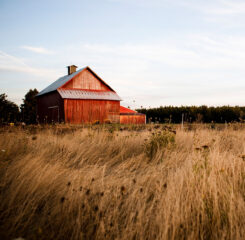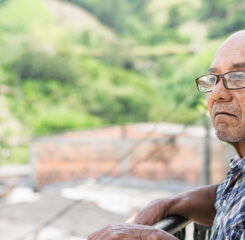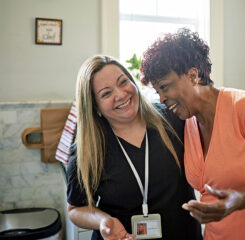CDC Issues COVID-19 Guidance for Federally-Assisted Housing
The CDC has issued Interim Guidance, “Preventing the Spread of COVID-19 in Retirement Communities and Independent Living Facilities.” This guidance is for owners, administrators, operators, workers, volunteers, visitors, and residents of independent living facilities and retirement communities that are not healthcare facilities, including federally-subsidized senior housing. The Interim Guidance notes several different kinds of independent housing “that is usually age-restricted” with support services for older adults it is applicable to various housing, including:
- Public housing for low- to-moderate income elderly (i.e., all publicly-assisted housing)
- Assisted living homes that do not provide medical services
- Continuing Care Retirement Communities, which include a range of housing options including independent living.
The CDC Interim Guidance takes into account that residents in retirement communities generally care for themselves. HUD senior housing communities are generally very porous buildings, where each resident may have their own network of service providers and volunteers that helps them age in community, in addition to any non-health and wellness visitors coming and going from the building.
Visitors
The CDC Interim Guidance states HUD-assisted housing communities, other independent living communities, and retirement communities, “may want to consider limiting visitation (e.g., maximum of one visitor per resident per day, restricting visitors with recent travel and those with symptoms of COVID-19), especially in common areas, to workers, volunteers, and visitors who are essential to preserving the health, including mental health, well-being, and safety of residents.”
Thus far, HUD’s “Frequently Asked Questions” from the Office of Multifamily Housing has not addressed the question of visitors in HUD-assisted housing. The CDC Interim Guidance does not contradict what HUD officials said in public March 18 conference call: In general, unless it’s mandated by state or local officials, owners must be careful to not infringe on residents’ civil rights when contemplating restricting visitors.
LeadingAge has heard from countless members seeking guidance on what they can and cannot do related to visitors. The Interim Guidance leaves a lot to interpretation and local flexibility, and minimally tells communities that they can restrict visitors.
Confirmed Cases
The Interim Guidance is also more explicit than HUD’s own information thus far regarding what actions owners and managers can take when a case has been confirmed. These steps, spelled out in the Interim Guidance, include coordinating with local health officials, communicating with residents, workers, volunteers, and visitors, and asking residents to self-monitor for 14 days and take action, if sick.
Slowing the Virus
The Interim Guidance includes brief, bulleted section on what the following stakeholders can do to slow the spread of the virus and prevent severe illness within communities: owners, operators, or administrators; residents; volunteers and visitors; and workers.
This Interim Guidance does not address key issues for local HUD-assisted housing communities, such as access to Personal Protective Equipment (e.g., masks), cleaning supply, emergency staffing, still-needed HUD regulatory flexibilities, and resources for rent supports and emergency staffing. LeadingAge continues to work with Congress and HUD for emergency funding, resources, and regulatory suspensions.

Most Recommended
October 15, 2025
 Shutdown Week Three: Impact of Ongoing Closure on Affordable Housing
Shutdown Week Three: Impact of Ongoing Closure on Affordable Housing
December 10, 2025
Fiscal Year (FY) Funding 2026
October 07, 2025
Immigrant Workforce Matching Program Brings Workforce Relief
Recently Added
December 12, 2025
 Rural Health Transformation Program: What’s in it for Aging Services?
Rural Health Transformation Program: What’s in it for Aging Services?
December 12, 2025
Top Level HR Execs Received 4.67% Salary Increase in 2025
December 12, 2025
Trump Administration Axes ‘Disparate Impact’ Civil Rights Protections
December 11, 2025



